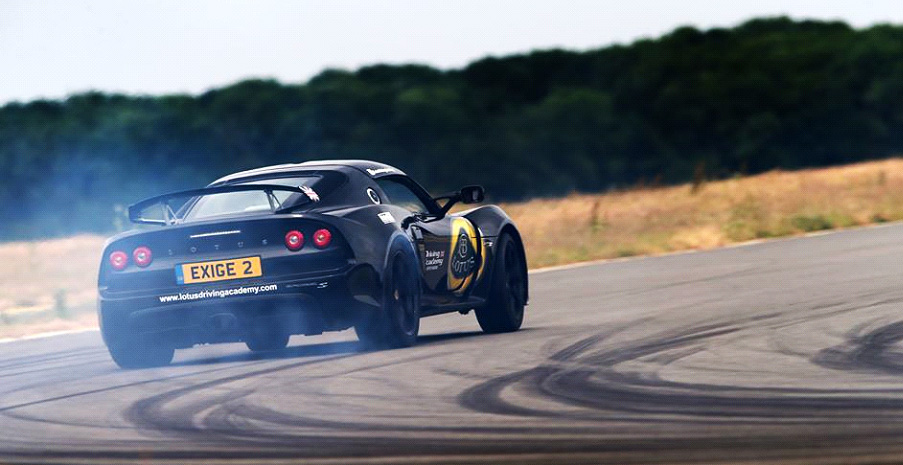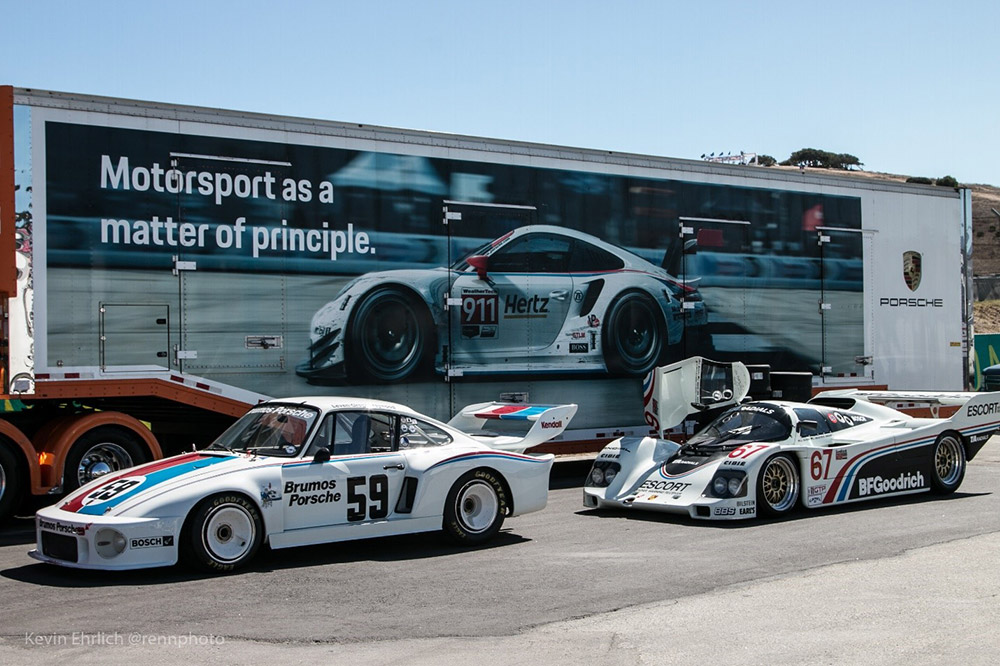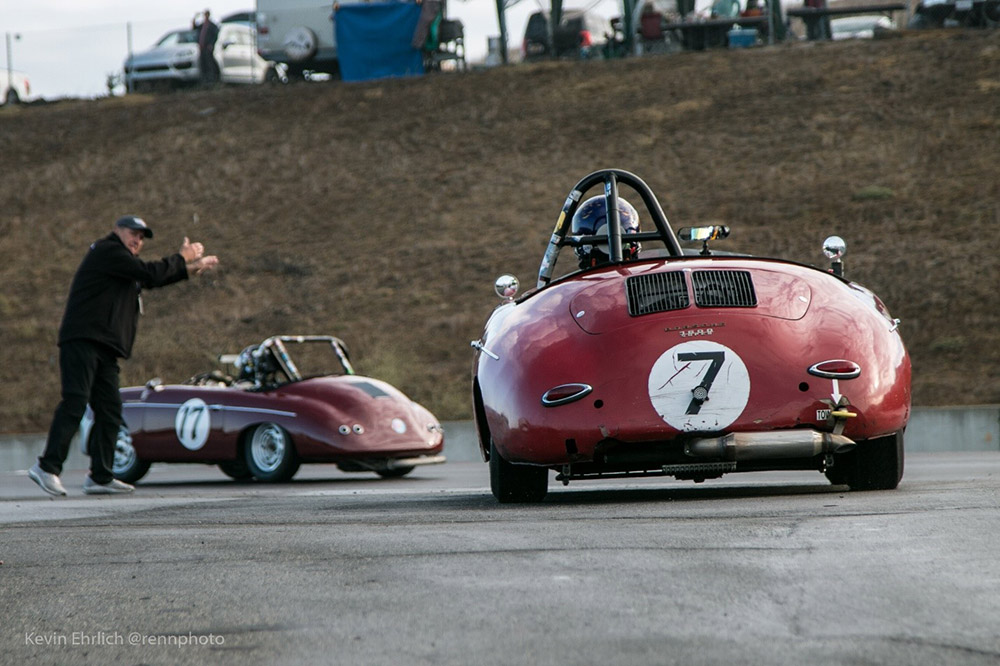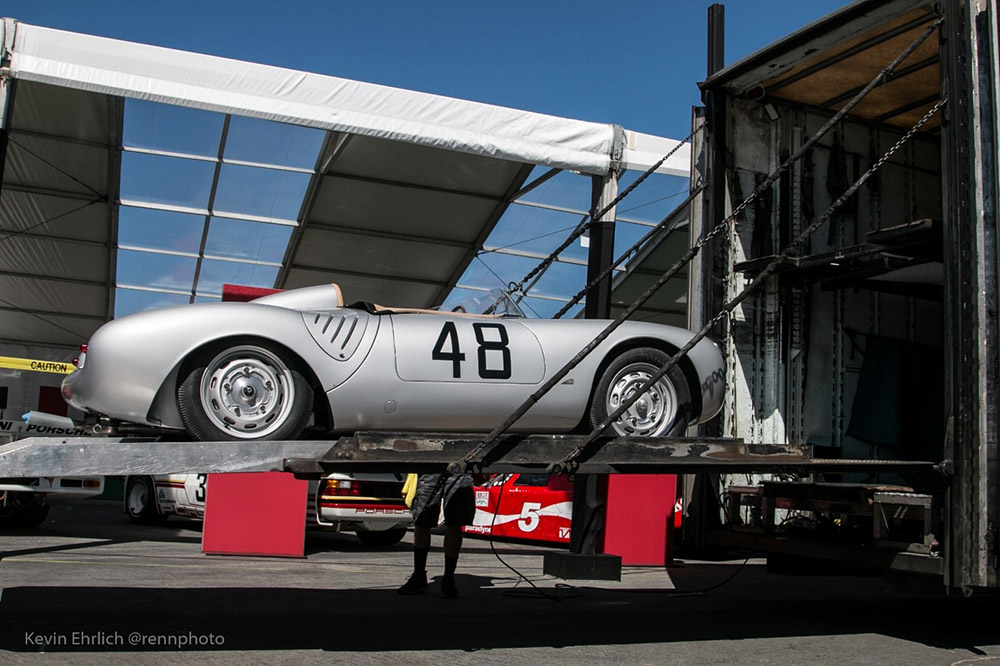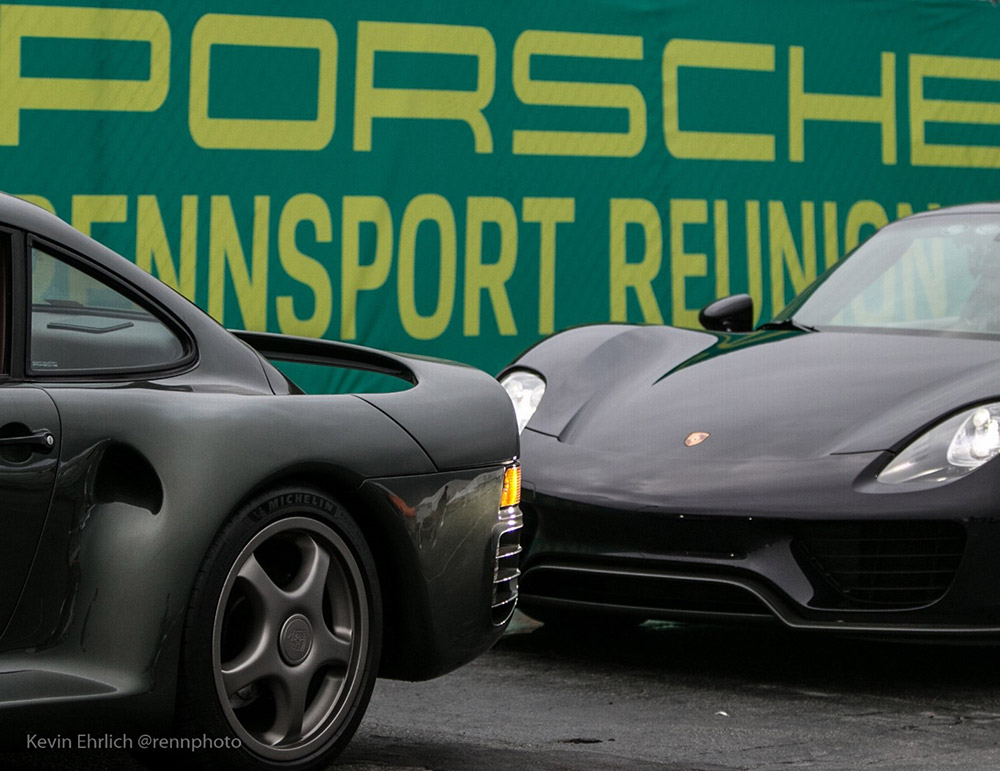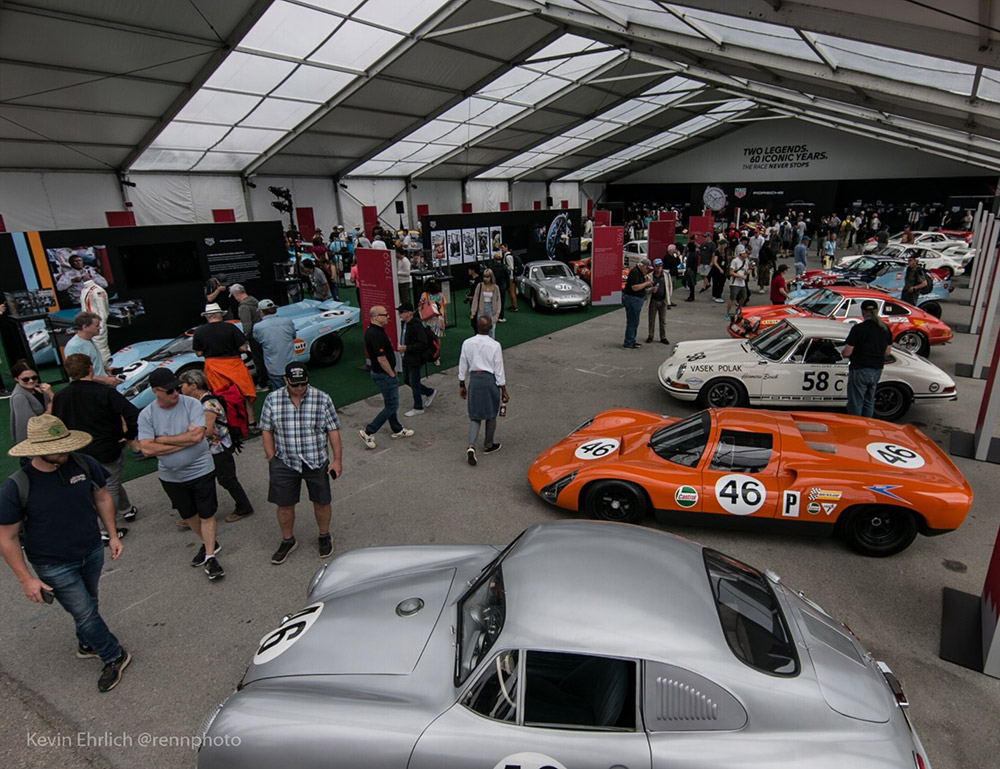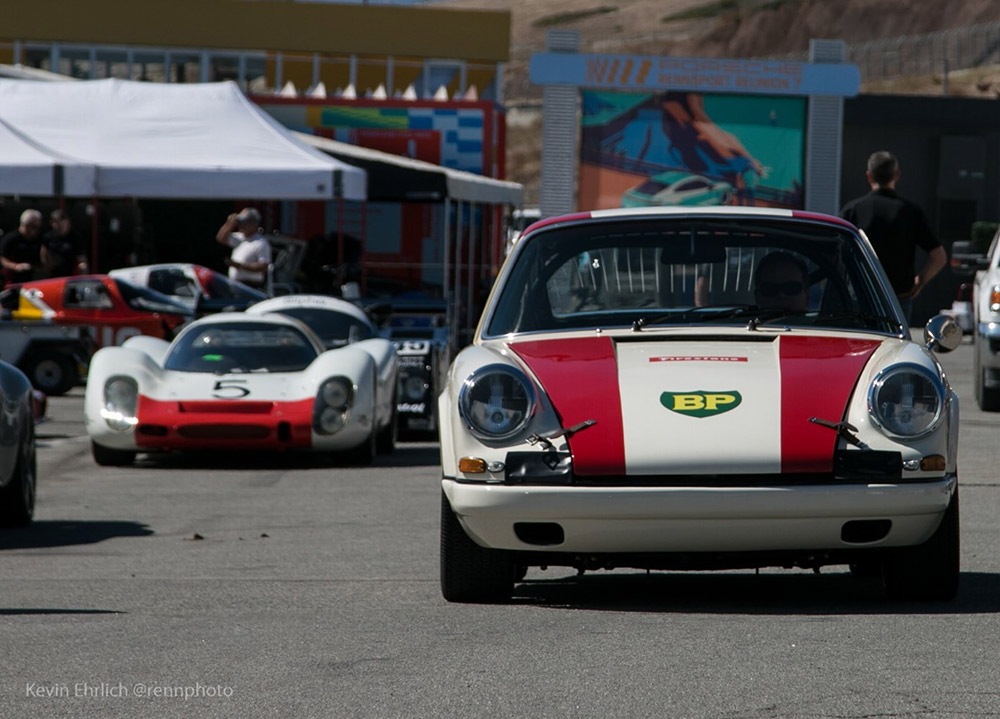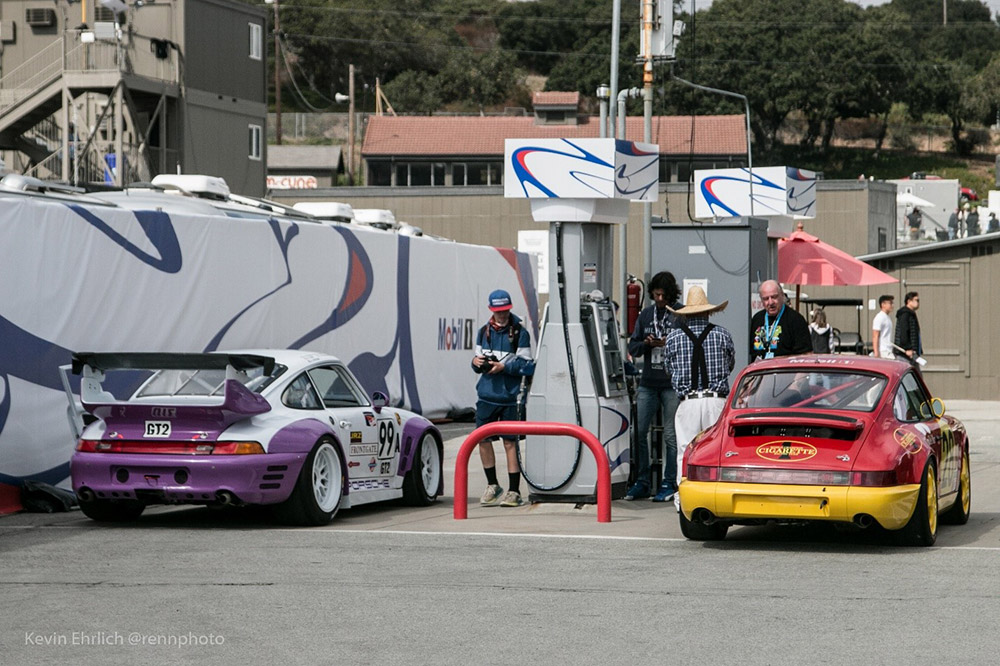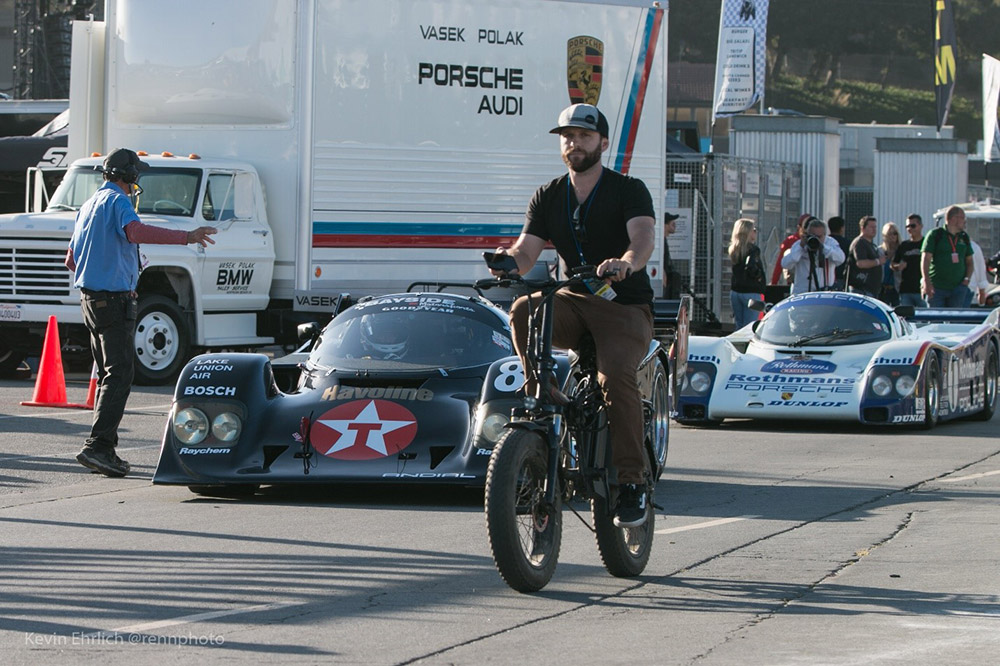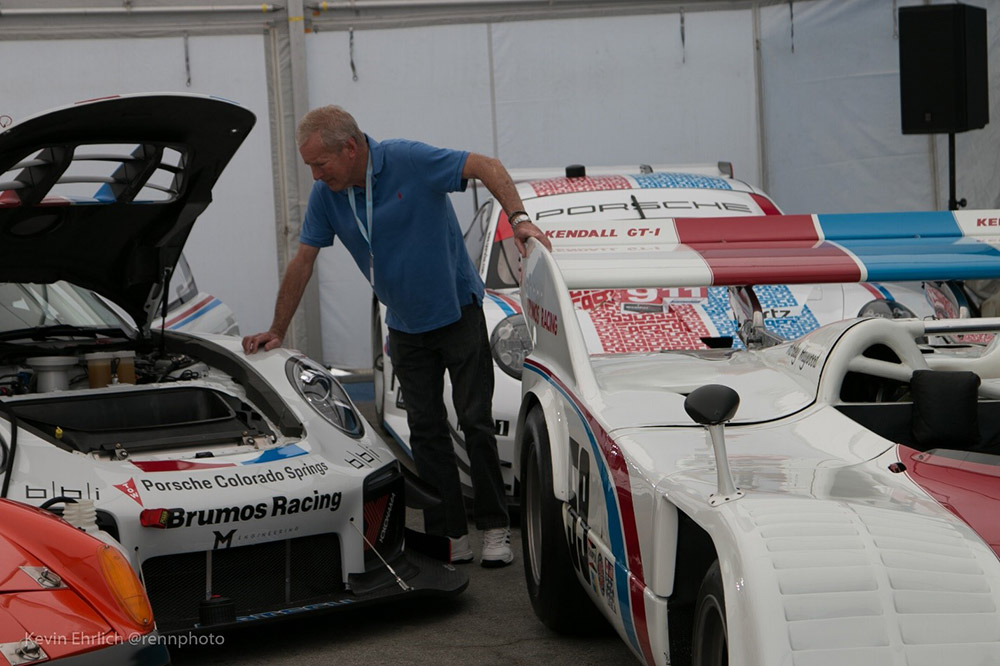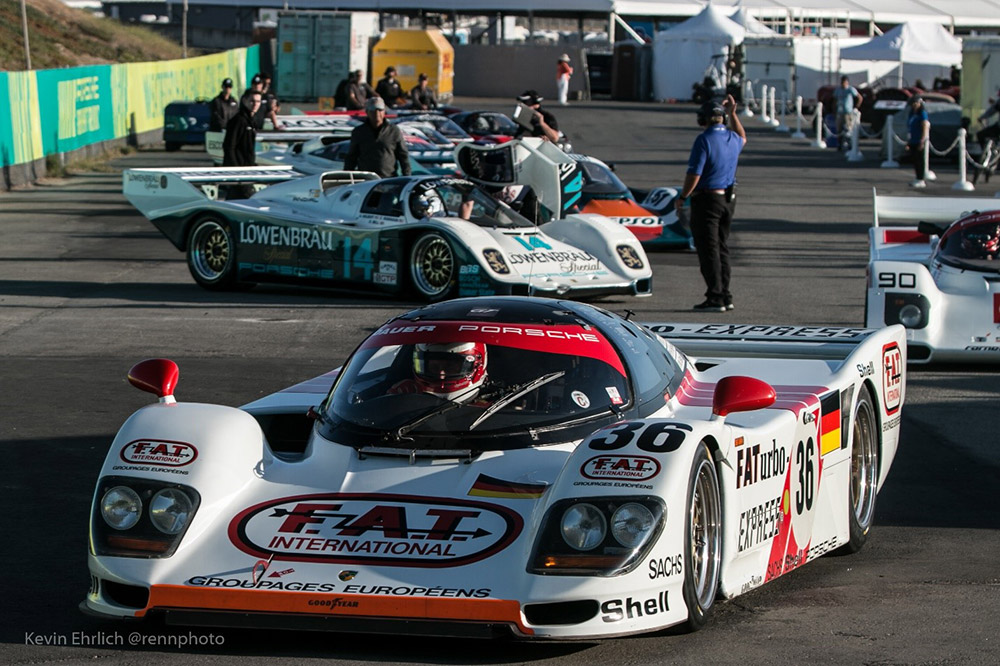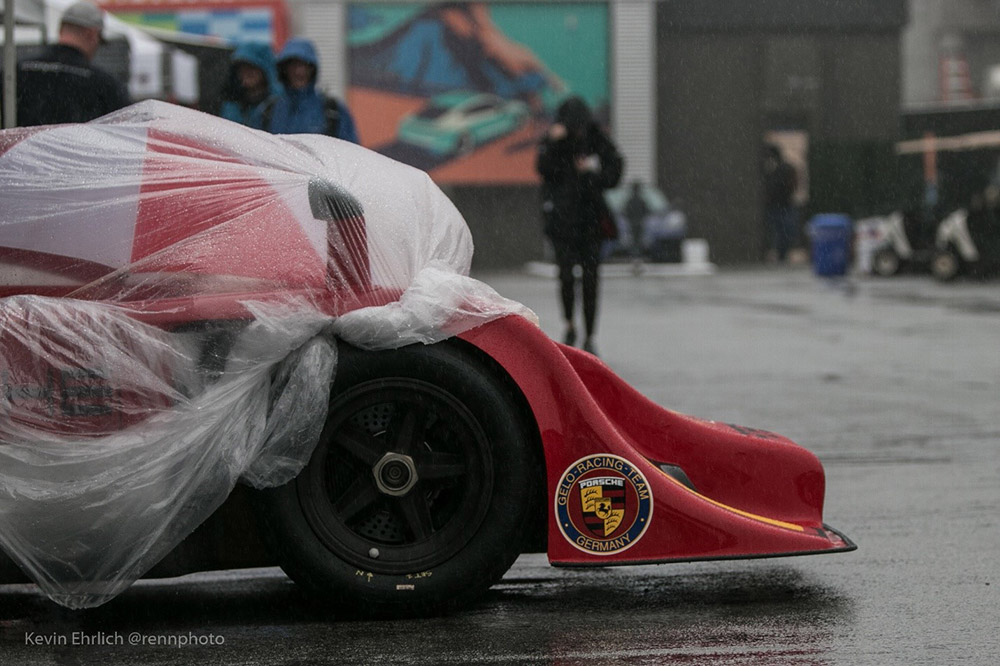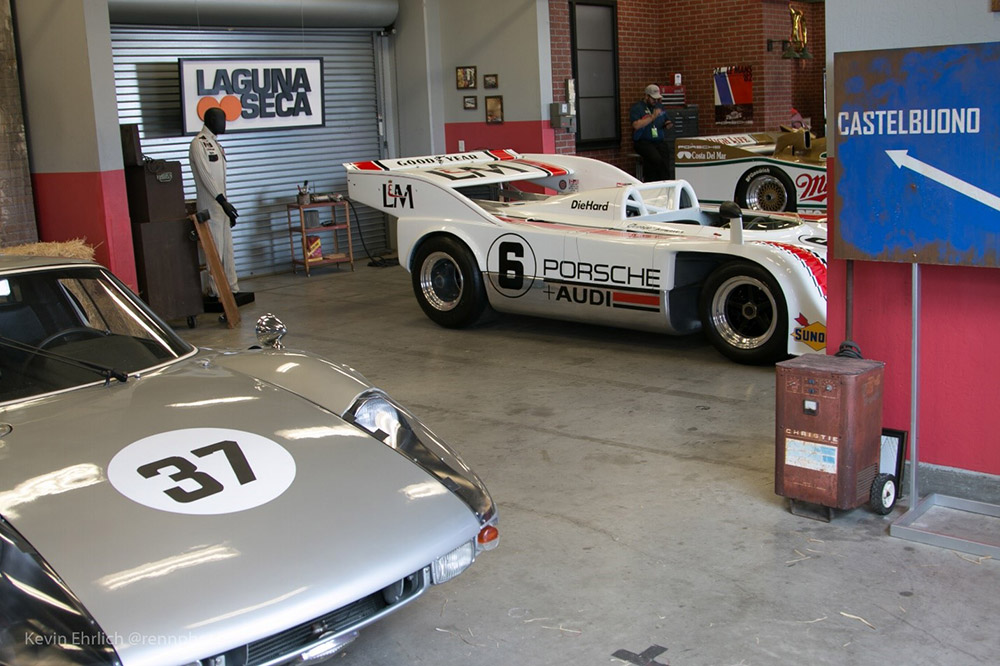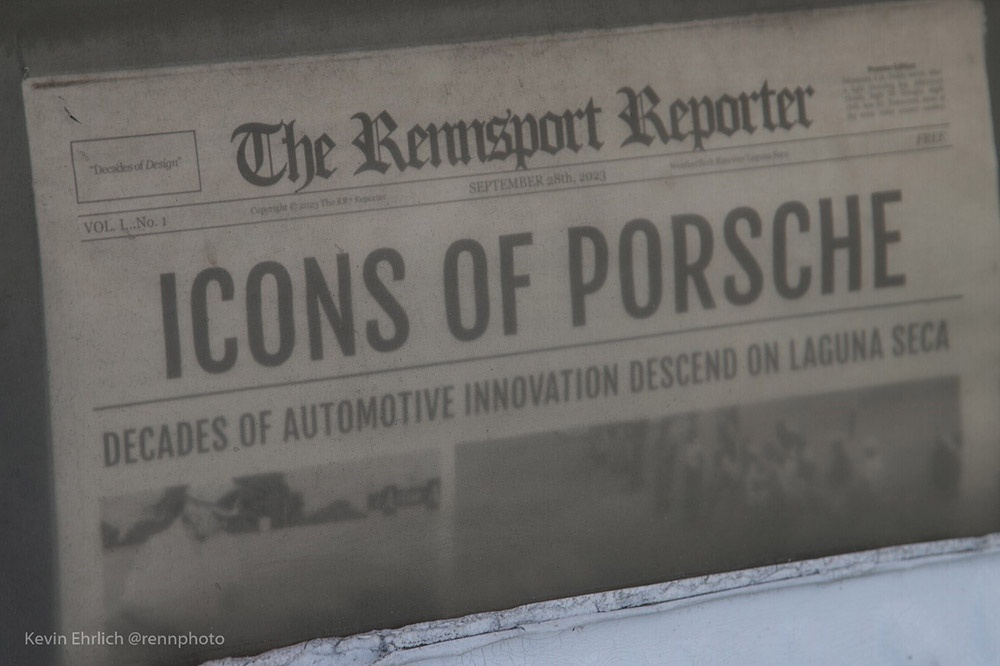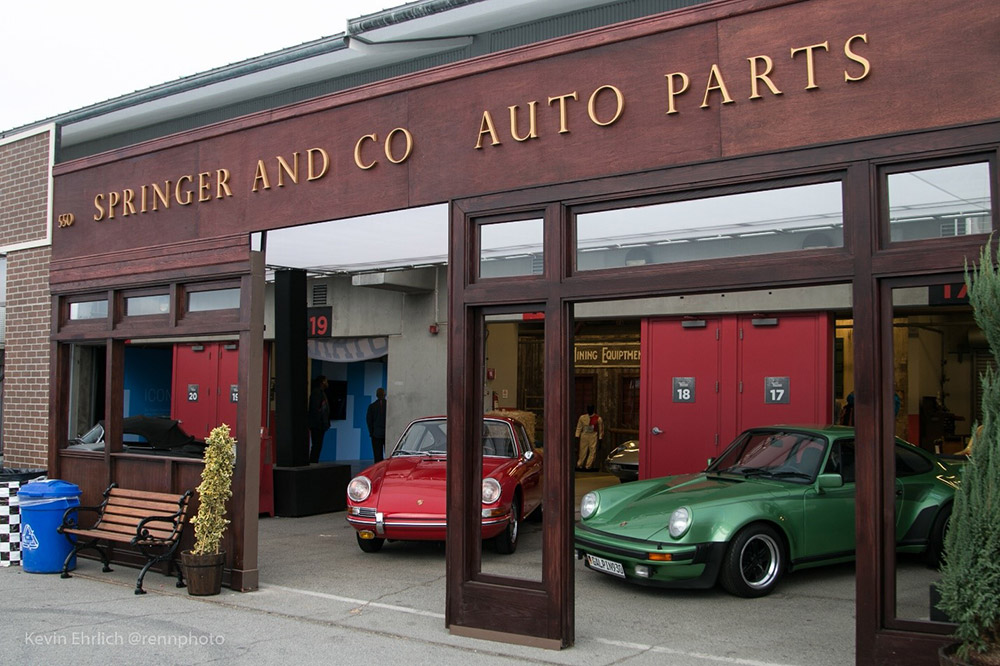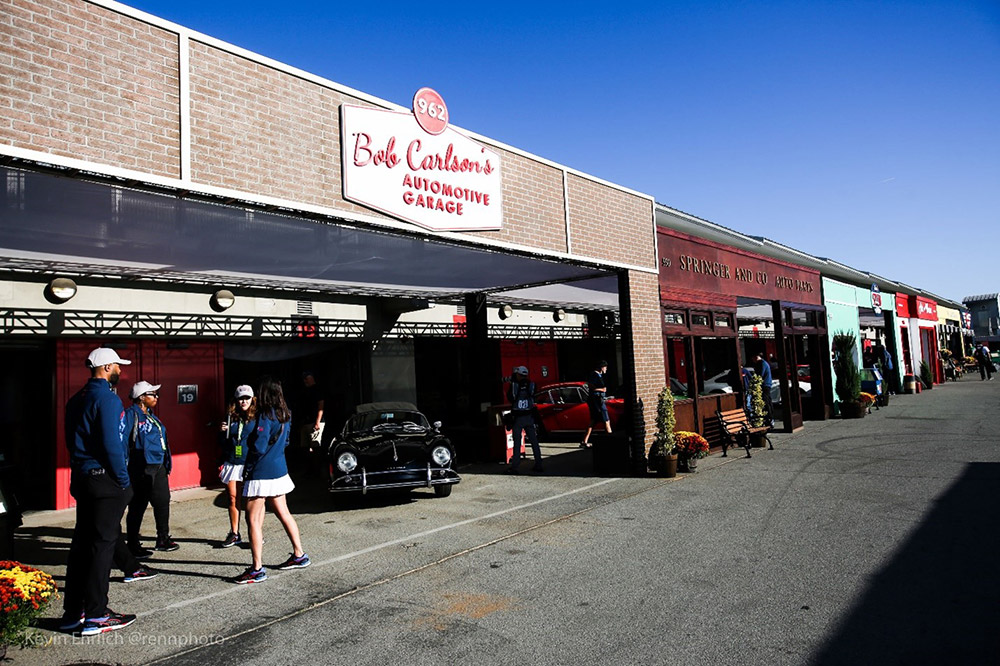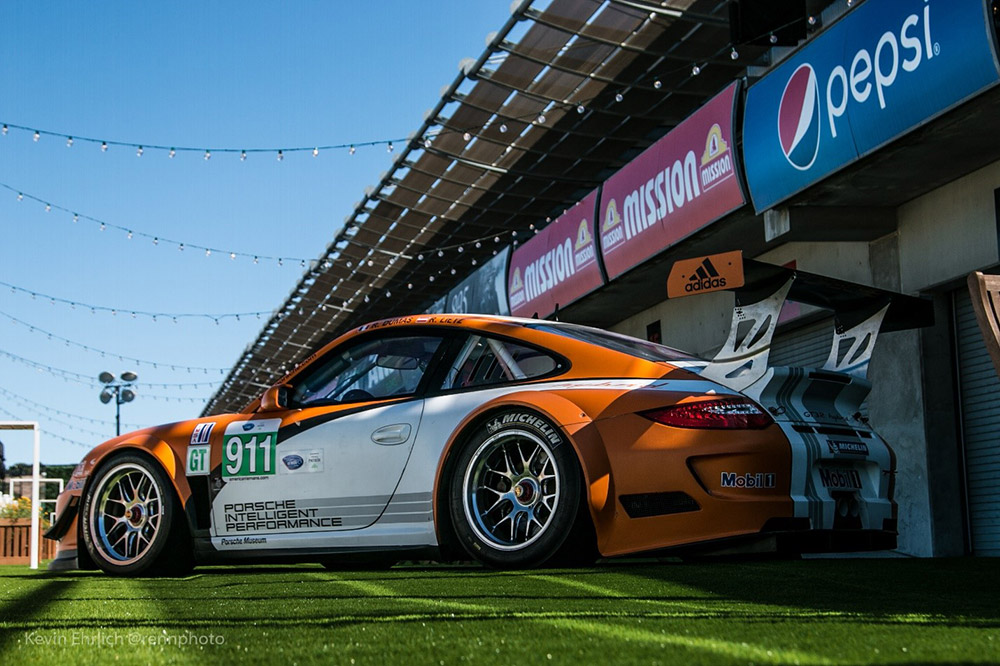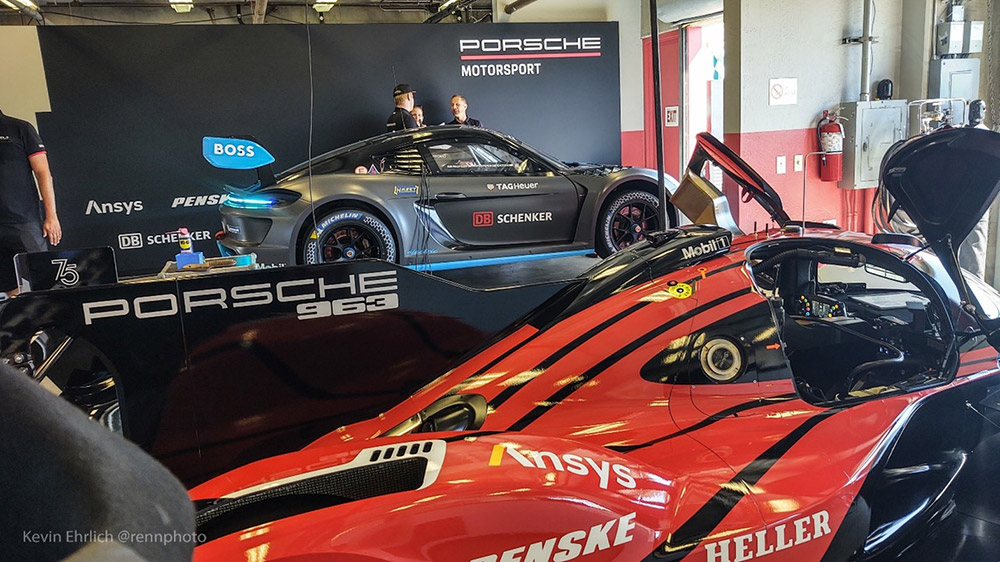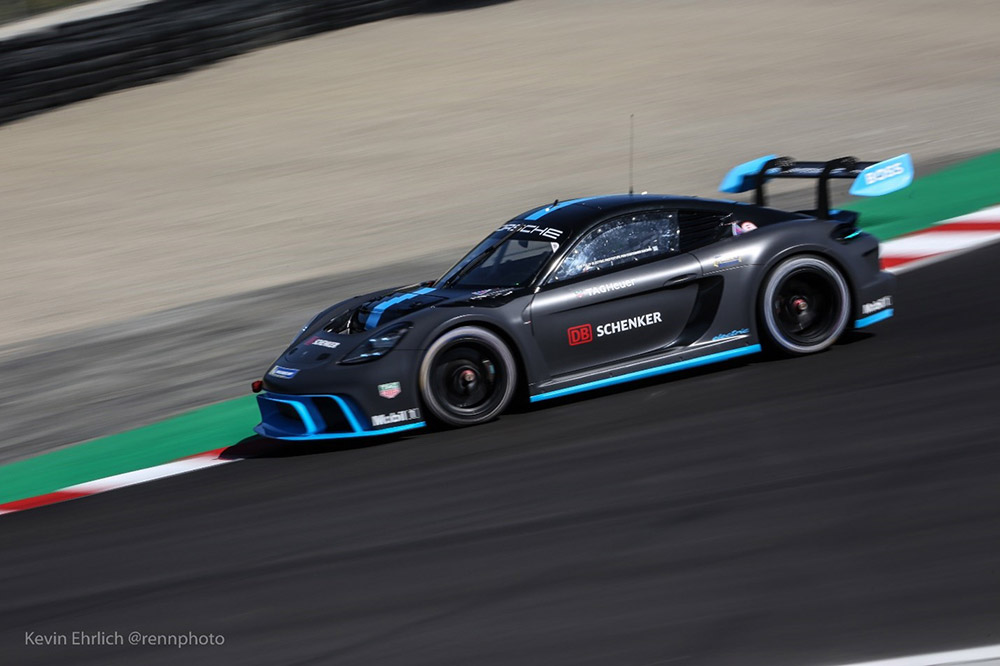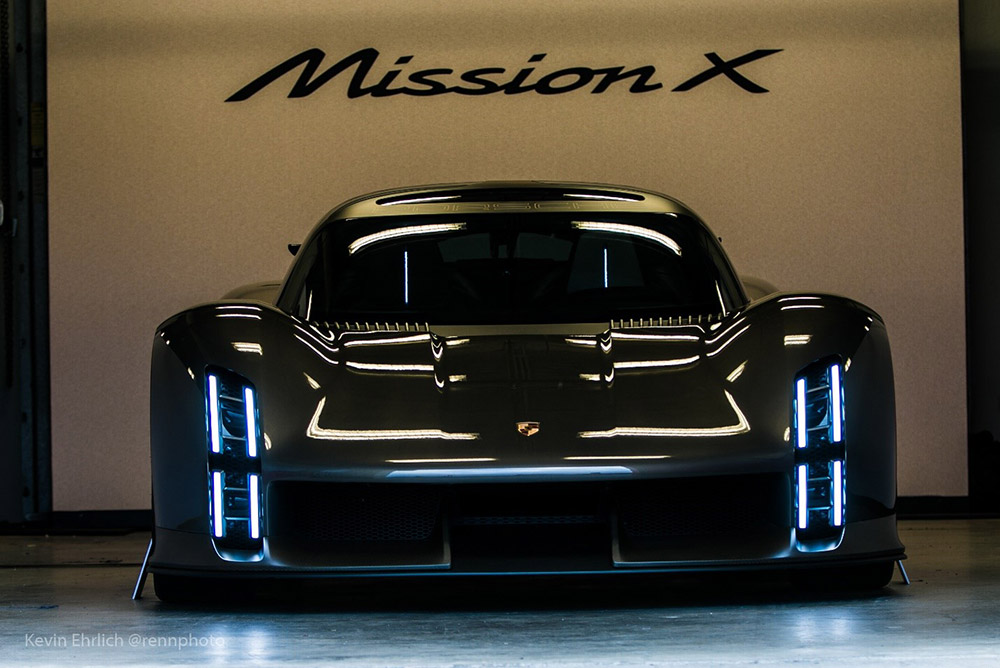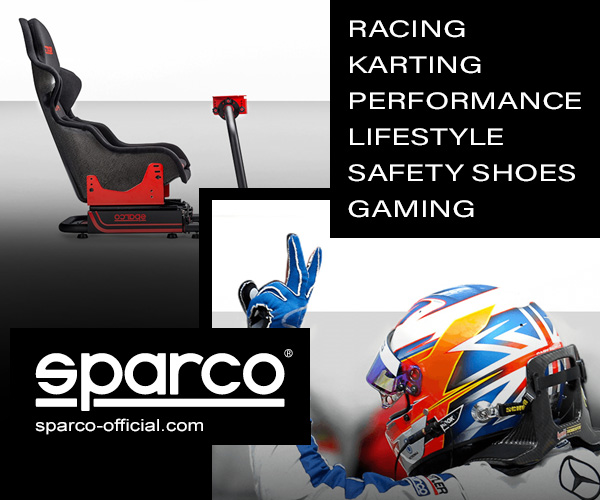Many have suggested that event like Rennsport Reunion is only possible with Porsche. The Rennsport Reunion formula combines decades of motorsport history in the form of notable cars from personal and factory collections, people that drove and worked on the cars in period, a broad and varied owner base, and an inextricable connection between road and race cars. Nobody else has the rich history, multiple generation of fans, and a company willing to celebrate it with a four-day open-house.
The seventh Rennsport Reunion at WeatherTech Raceway Laguna Seca re-set the bar for motorsports events. Porsche played a more active role in design and planning than for past Rennsport Reunions. An event that started as a vintage racing weekend in 2001 featuring Porsche has evolved into an affair wrapped with historical context, graphics, artwork, spectator engagement, and full factory support. Porsche Cars North America worked with vendors, friends, owners, and Porsche AG in Germany for a year to pull it off. Dozens and dozens of Porsche staff were on-hand, many re-purposed from their usual Porsche day jobs.
A Rennsport record 91,000 spectators flocked to Monterey across four days. Local hotels and restaurants were packed and Porsches swarmed every nearby road and parking lot. Cars wedged into every available parking space and the track stopped selling tickets for Saturday due to county-imposed limits. For comparison, Rennsport Reunion 6 in 2018 hosted 81,550 guests and Rennsport Reunion 5 in 2015 recorded total attendance of 60,000.
Rennsport Reunion 7 is a do-it-yourself adventure. Anoraks spend four days immersed in details of their choice. Racers check out chassis numbers, race histories, liveries, engineering details, and stories told by former drivers. Those who gravitate to road cars compare paint-to-sample finishes, outlaw custom projects, halo supercars, and time capsule examples of specific models. Ropes and barriers are the extreme exception and the curious are respectful of the machinery. Cell phone cameras are pervasive. Everyone snaps photos and video clips to preserve the memory.
Rennsport has an event schedule, but also has a randomness element. A car could be sitting unattended but surrounded an hour later by a cluster of people getting a look at mechanical details exposed after bodywork is removed. Cars dodge pedestrians in the paddock on their way to the starting grid, from a track session, to a photo shoot, or from parade laps. Aside from the risk of being run over by a Le Mans winner, the continual rolling parade offers something new around every corner.
Legendary drivers chat with old friends, pose for photos, and then are gone in a flash to an autograph session elsewhere. Cars coincidentally park near or next to each other, often offering a compare-and-contrast opportunity that lasts until one or both move on and the moment dissipates. Rain on Saturday added a different flavor than other days, collecting in reflective puddles on the ground and spreading water droplets on spoilers and fender flares. Each sliver is a micro-event and each person’s Rennsport Reunion is distinctly created by their unique combination of moments.
Laguna Seca’s permanent garages were transformed into a timeline of Porsche racing history. Each bay housed a single car representative of that decade. Porsche added historical touches for each decade for each car in the form of photos, garage equipment (including tools, telephones, day planners, catalogs, oil cans), and driver suits. Hay bales, wooden fence rails, and a mining building façade surrounded a blue 550. The 919 sat in a re-created Le Mans garage stall. Actors wearing period-correct outfits told the story of each car and time period and posed for photos. Porsche even printed a Rennsport Reunion newspaper with more nuggets of history and details about the cars on display.
In front of the garages, Porsche created façades with unique store-fronts. Road cars occupied these areas, a nod to the days when the showroom faced forward and the workshop garages were situated behind. Names of people who played a big part in Rennsport such as Patrick Long, Norbert Singer, and Bob Carlson were incorporated into store-front signage. Carlson was the long-time PR force at Porsche Cars North America who gave life to the first Rennsport Reunion idea.
Rennsport Reunion is about the past and present, but Porsche subtly ensured that a message of technical progress and looking ahead was delivered as well. As internal combustion engines cede ground to hybrid and electric technology, Porsche’s timeline of progress thought motorsport was unmistakable. The 911GT3 R Hybrid and 919 LMP are retired but represented the evolution of power. Their on-track research and development work led to the current-spec 963 that races in IMSA and WEC competition.
The factory Penske Porsche team ran demonstration laps with their 963 and privateer JDC MotorSports brough their yellow 963 direct from a test session at Road Atlanta. A fully electric Cayman GT4 demonstration car brought a whine of electric motors to the hills around Laguna Seca. The North American debut of the Mission X concept car at Rennsport Reunion is another sign of Porsche’s direction. Are these concepts the future of racing or will they turn out to be novel experiments en route to different paths? Future Rennsport Reunions will likely tell the story.

